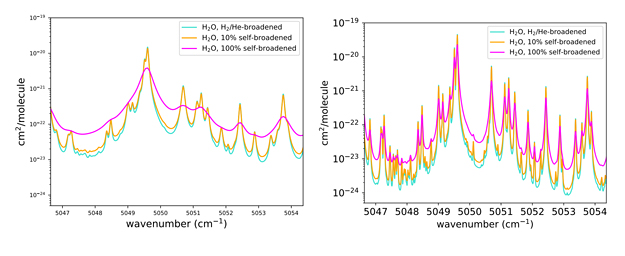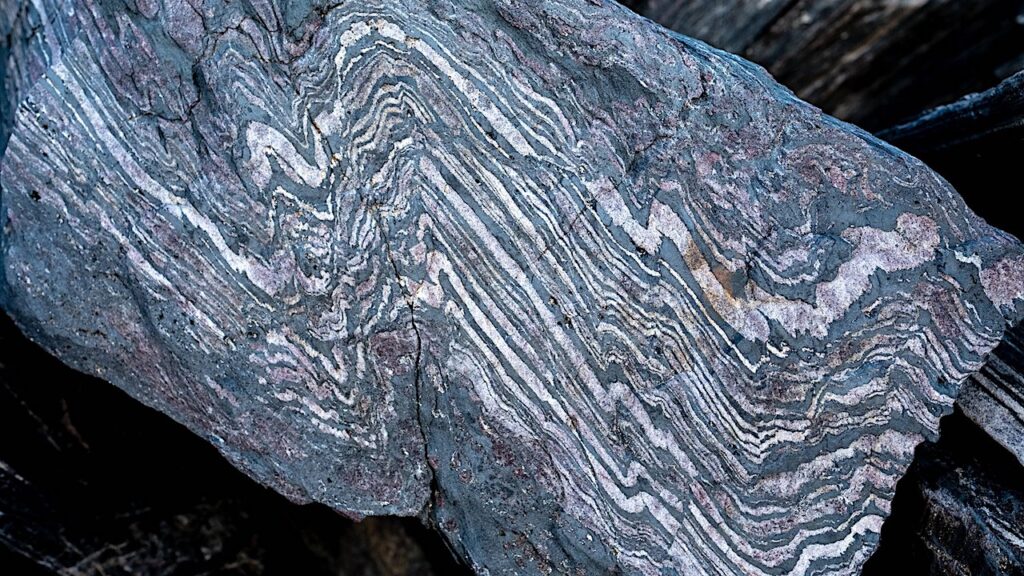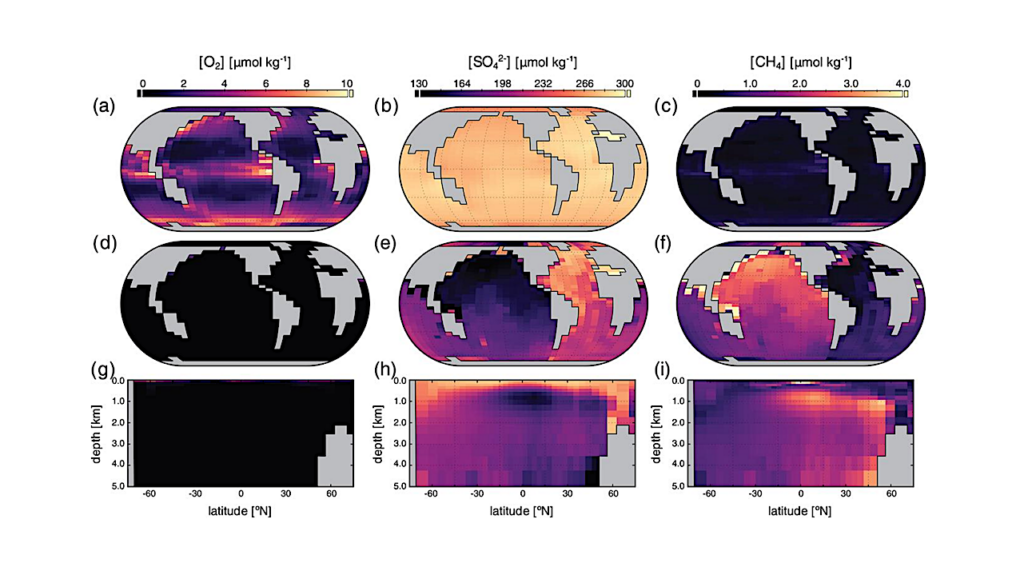Cross-sections for Heavy Atmospheres: H2O Self-broadening

The discovery of super-Earth and mini-Neptune exoplanets means that atmospheric signals from low-mass, temperate exoplanets are being increasingly studied.
The signal acquired as the planet transits its host star, known as the transit depth, is smaller for these planets and, as such, more difficult to analyze. The launch of the space telescopes James Webb (JWST) & Ariel will give rise to an explosion in the quality and quantity of spectroscopic data available for an unprecedented number of exoplanets in our galaxy. Accurately extracting the information content, thereby permitting atmospheric science, of such data-sets will require robust models and techniques.
We present here the analysis of simulated transmission spectra for water-rich atmospheres, giving evidence for non-negligible differences in simulated transit depths when self-broadening of H2O is correctly accounted for, compared with the currently typically accepted standard of using H2 and He-broadened cross-sections. Our case-study analysis is carried out on two super-Earths, focusing on water-based atmospheres, ranging from H2-rich to H2O-rich.
The transit depth is considerably affected, increasing values by up to 60 ppm, which is shown to be detectable with JWST and Ariel. The differences are most pronounced for the lighter (i.e. mu ∼ 4) atmospheres. Our work illustrates that it is imperative that the field of exoplanet spectroscopy moves toward adapted cross-sections, increasingly optimized for high-mu atmospheres for studies of super-Earths and mini-Neptunes.
Lara O. Anisman, Katy L. Chubb, Quentin Changeat, Billy Edwards, Sergei N. Yurchenko, Jonathan Tennyson, Giovanna Tinetti
Subjects: Earth and Planetary Astrophysics (astro-ph.EP)
Cite as: arXiv:2203.02335 [astro-ph.EP] (or arXiv:2203.02335v1 [astro-ph.EP] for this version)
Submission history
From: Lara Anisman [view email]
[v1] Fri, 4 Mar 2022 14:21:00 UTC (1,278 KB)
https://arxiv.org/abs/2203.02335
Astrobiology,








